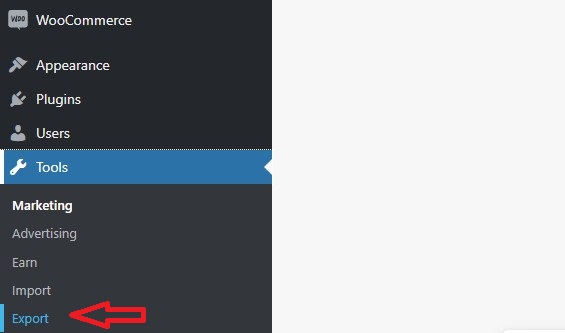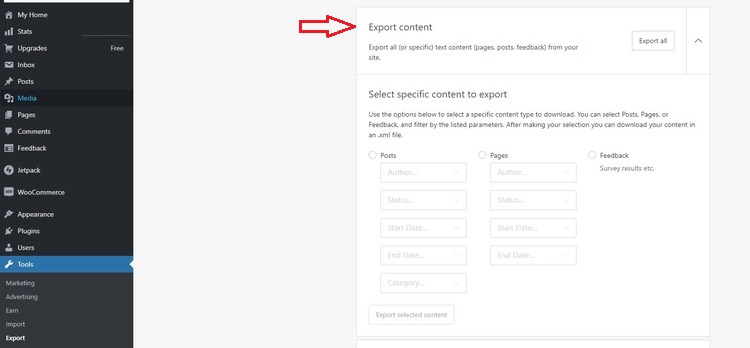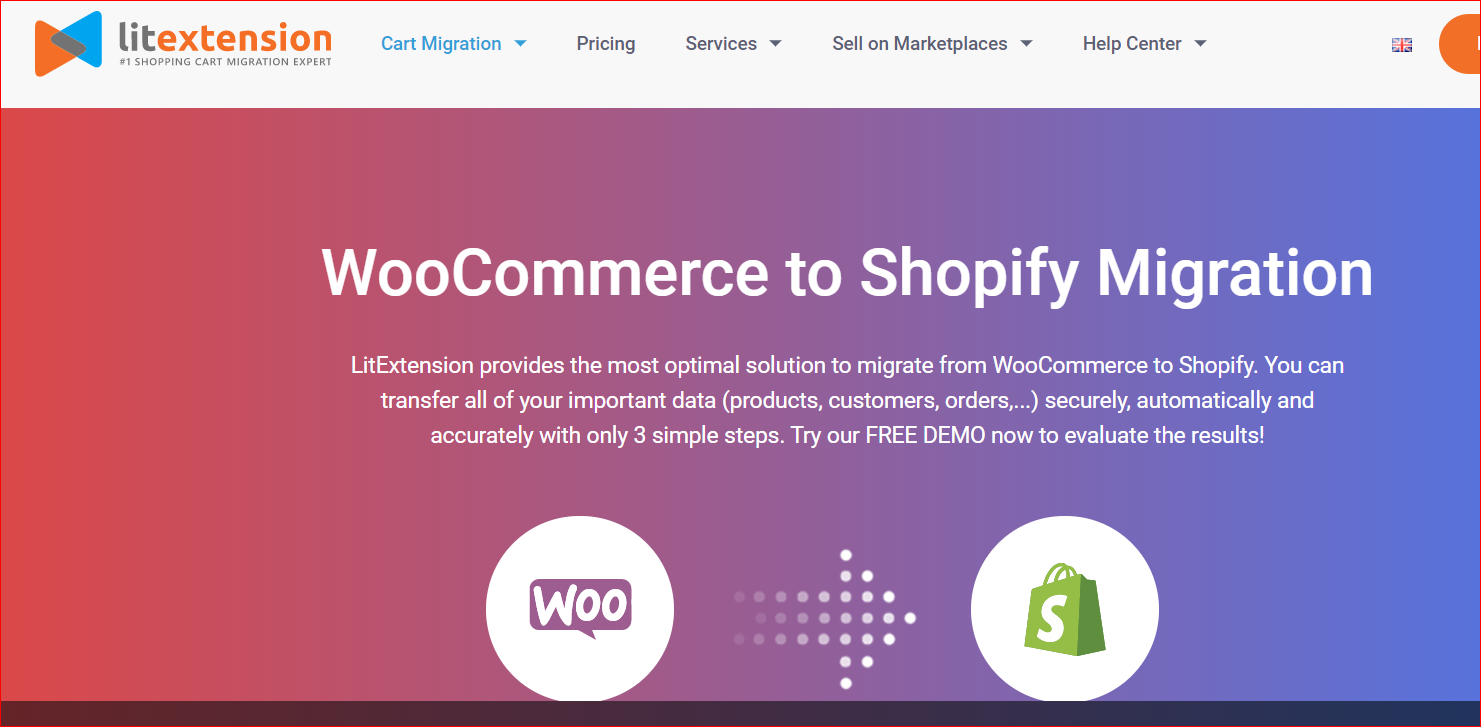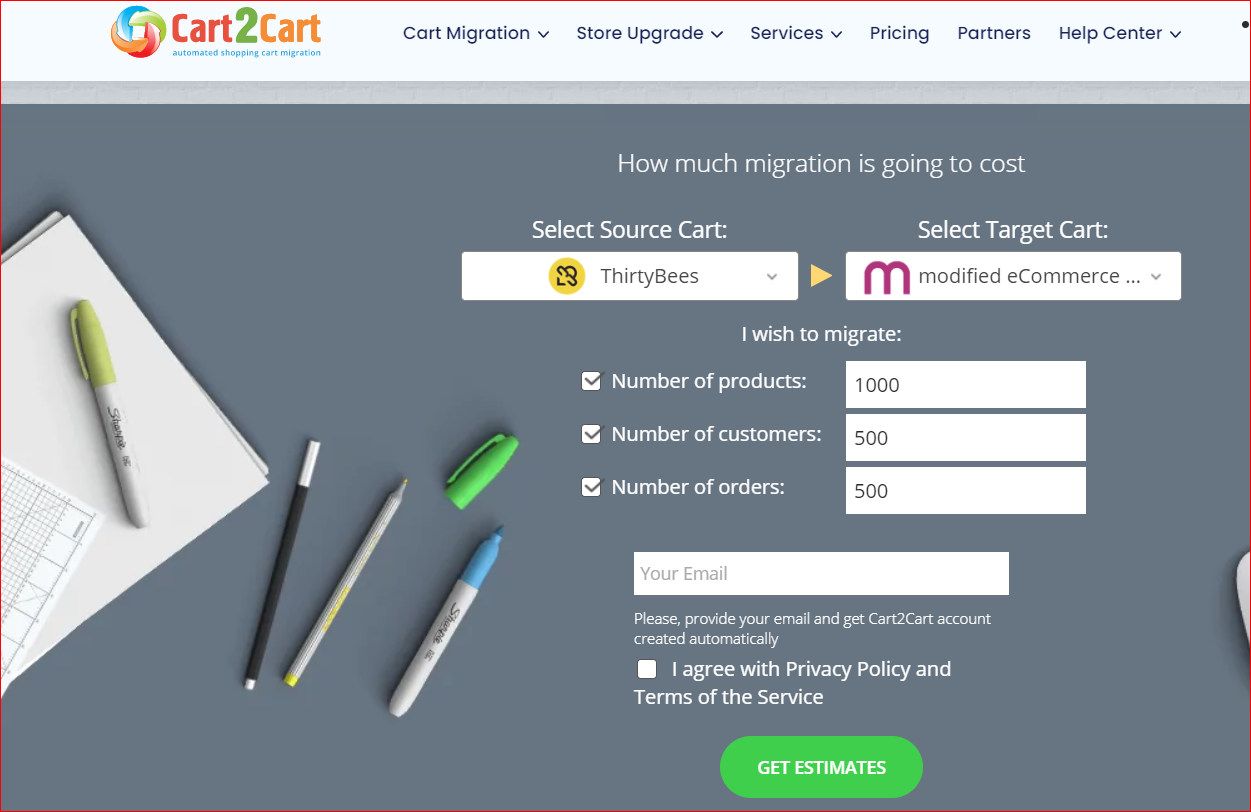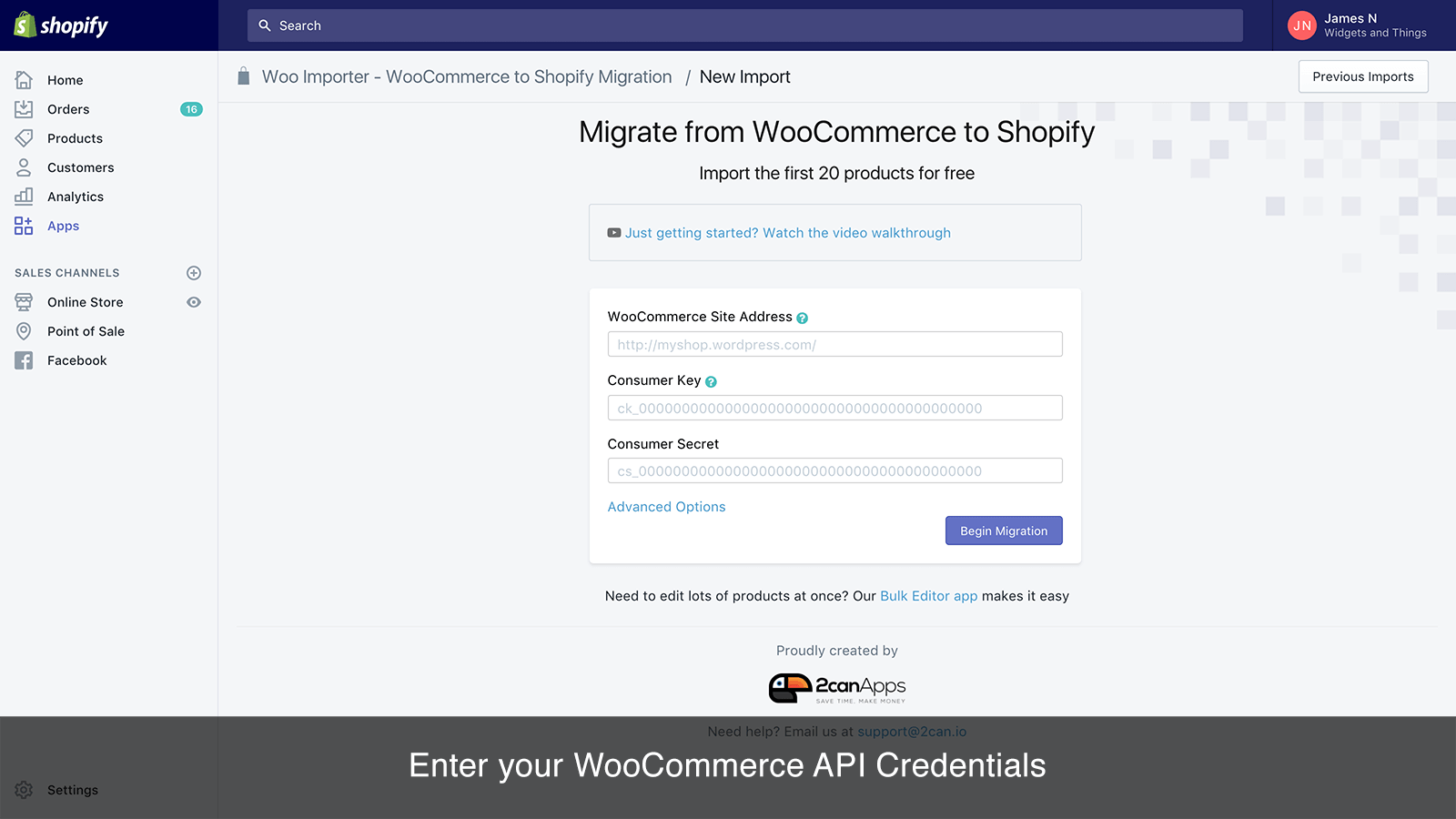- Types of data you can transfer from the WooCommerce store to Shopify3 Methods for WooCommerce to Shopify replatformingMigration from WooCommerce to Shopify: A Step-by-Step Guide
- Step 1: Sign up for a Shopify accountStep 2: Export WooCommerce dataStep 3: Import WooCommerce products to ShopifySo, Post-Migration: What Should You Do?
- Step 4: Transfer your domain name from WooCommerce to ShopifyStep 5: Set up redirects from WooCommerce to ShopifyStep 6: Review and update imported dataStep 7: Set up the basic information for your new storeStep 8. Test and launch your storeStep 9. Train your staffStep 10. Market your new Shopify storeProblems When Transferring from WooCommerce to Shopify (and Actions to Avoid)Why do you need to migrate from WooCommerce to Shopify?Top 3 extensions to migrate from WooCommerce to Shopify
-
Are you considering moving your online store from WooCommerce to Shopify? Whether you’re looking for more features, better support, or a more user-friendly platform, WooCommerce to Shopify migration can be a great choice. However, the process can be daunting if you’re not familiar with the steps involved.
In this article, we’ll walk you through:Types of data you can transfer from the WooCommerce store to Shopify
Though you can manually export more types of data from WooCommerce, including products, customers, orders, and coupons, you can only import the product and customer data into Shopify. If you want to migrate the other types of data, you will have to use third-party transporters. They will help you to transport all the data as follows:
- Products: manufacturer name, status, name, full description, product tags, meta title, images, and variants in price, price, weight, SKU, and quantity.
- Product categories: name, image, meta description, meta title, and meta description.
- Customers: first name, last name, email, and shipping address (address, company, state, city, zip code, and country) and billing address (zip code, country, state, city, company, address, first name, last name)
- Orders: shipping price, discount price, order comments, tax price, product price, quantity, option, SKU, name.
- Coupons
- Reviews
- CMS pages
- Blogs
Exclusive Offer: Get Shopify 33 days for just $1 + The Online Store Starter Kit
Start your 3-day free trial, and enjoy your first month of Shopify for 1$ plus the premium package designed especially for new Shopify merchants!
3 Methods for WooCommerce to Shopify replatforming
There are 3 different ways to migrate to Shopify from WooCommerce:
- Manual migration: A free method that gives you full of control over the transfer process, but it’s time-consuming and carries a higher risk of errors if data isn’t mapped correctly.
- Using an importer app: A faster and more user-friendly option that reduces errors and often includes data mapping and customization, though it comes with a cost and depends on the quality of the app used.
- Hiring an expert: The most expensive method, but it ensures a smooth, accurate migration handled by professionals who can also provide optimization advice—just be sure to choose a reputable expert. Find expert here.
So, Which Migration Method is Right for You?
The method of migrating from WooCommerce to Shopify that you should choose depends on your budget, time, and level of expertise. Here are some general recommendations:
- Manual migration: Best suited for users who have a small number of products, customers, and orders to transfer and are comfortable working with data mapping and formatting on their own. If you have a limited budget and are willing to invest some time and effort, manual migration can be a viable option.
- Importer app: This method is ideal for users who have a moderate to large number of products, customers, and orders to transfer and want to save time and reduce the risk of errors. Make sure to choose a reputable and reliable app that can handle your specific data types and configurations.
- Expert hire: This method is recommended for users who have a large or complex store to transfer and want to ensure a seamless and optimized migration. If you have a higher budget and want to rely on the expertise of a professional, hiring an expert can be a smart investment.
Migration from WooCommerce to Shopify: A Step-by-Step Guide
Step 1: Sign up for a Shopify account
You need a Shopify store before you can actually migrate WooCommerce stores to Shopify. To have one, you can just start a free trial first or buy a subscription plan.
Start a Shopify free trial
- Visit shopify.com and click “Start free trial.”
- You’ll be prompted to answer a few setup questions — feel free to skip them if you prefer.
- Add your store name.
- After completing these steps, you’ll be taken to your Shopify Dashboard, and your account setup is complete.
Purchase a Shopify subscription plan
Shopify’s free trial lasts only 3 days, so if you’re serious about migrating and selling on Shopify, it’s recommended to choose a subscription plan early on.
Here’s a quick overview of Shopify’s main pricing options:
- Starter – $1/month for the first month, then $5/month
- Basic – $29/month (billed annually) or $39/month (billed monthly)
- Shopify – $79/month (billed annually) or $105/month (billed monthly)
- Advanced – $299/month (billed annually) or $399/month (billed monthly)
- Shopify Plus – Starts at $2,000/month (for enterprise-level businesses)
Once your Shopify account is set up, you’re ready to begin the migration process from WooCommerce.
Step 2: Export WooCommerce data
- Go to WordPress Admin Panel
- Click “Tools “> “Export“
- Select the data you want to export, such as products, orders, customers, blog content, reviews, etc.
- Save the exported data as a CSV file.
💡 NOTE: You can skip this step if you use a third-party importer app to migrate data from WooCommerce to Shopify. However, it’s still important to back up and keep a copy of your data as a precautionary measure.Export Your Order History from WooCommerce
Shopify store owners can export the order history b yvia installing a plugin:
- Step 1: In the WooCommerce account, click the “Import Export Suite” and choose “Export.”
- Step 2: Select “Orders” in the post type and click “Select an export method.”
- Step 3: In the next dialog box, carry out the following:
– Choose an export method
– Check which hidden files you want to include
– Click “Advanced options/ Batch export/ Scheduling“
- Step 4: To export guest users, click “Yes” or “No.
- Step 5: Put the name of your export file WooOrdersDownload
- Step 6: Choose the export format CSV and choose the “Delimiter”
- Step 7: Choose the “Export” button
Step 3: Import WooCommerce products to Shopify
Migrating from WooCommerce to Shopify using an importer app
There are many importer apps on the Shopify App Store for you to choose from. Using an importer app, such as LitExtension or Cart2Cart, makes everything so fast and simple. The process is very straightforward:
- Select “WooCommerce” as a source cart and “Shopify” as a target cart.
- Select the data you want to migrate, such as products, orders, customers, and reviews.
- Click “Start the migration process” and wait for it to complete. This may take a while, depending on the size of your store and the amount of data being migrated.
Migrating from WooCommerce to Shopify manually
Import product data
- Go back to Shopify Admin Panel > Click “Products” > Click “Import.”
- Click “Add file.” You can either browse and choose a CSV file from your computer or drag and drop a CSV file there.
- Click “Upload and continue.” Click “Import Products” until Shopify finishes uploading and importing your data.
It takes a while for this to process. Once the importation process is complete, you can see products listed on the Shopify store.
Import customer data
The same import process applies to importing other data, like customer data. Except that you now have to select “Customers” > “Import“ > “Add file” > “Import customers.”
It takes a while for this to process. Once the importation process is complete, you can see products listed on the store.
Import images
To transfer your product images to your Shopify site after moving from WooCommerce, follow these steps:
- From your Shopify admin, select “Content” and then click “Upload files.”
- Select all the images you want to upload to Shopify.
- Click the “Copy link” icon for each image you want to transfer.
- Open the CSV file that contains your products and add a new column called “image Src.”
- Paste the image URL into each line of the “image Src” column and save the CSV file.
- Import the CSV file to your Shopify by selecting “Import” in the Products section of your admin dashboard.
- Wait for the import process to complete.
So, Post-Migration: What Should You Do?
Step 4: Transfer your domain name from WooCommerce to Shopify
Here’s a detailed, step-by-step guide on how to transfer a domain from WooCommerce to Shopify:
- Log in to your account with your domain provider.
- Find your DNS settings. This is usually found under “Manage DNS” or a similar option.
- Locate the “www” CNAME record and change it to point to “shops.myshopify.com”.
- If your domain provider requires a host name with the “A record,” set it to the “@” symbol.
- Locate the “A Record” and change it to Shopify’s IP address. The IP address is provided by Shopify and can be found in their help documentation.
- Confirm your settings and save them.
- In your Shopify admin, click “Settings,” then click “Domains.”
- Click “Connect existing domain” and enter your custom domain.
- Click “Next” and then click “Verify connection.” It may take up to 48 hours for your custom domain to connect, but it could happen immediately.
- Once your domain is connected, you can set it as the primary domain for your Shopify store by clicking “Change primary domain” and selecting your custom domain as the primary.
*Note: the steps from #1 to #6 may be different depending on your domain provider.
Step 5: Set up redirects from WooCommerce to Shopify
Here are the steps to redirect your WooCommerce store traffic to your new Shopify store:
- Install and activate the Redirection plugin on WordPress.
- In the WordPress Admin Panel, go to Redirection.
- Click “Add new redirection” to create a new redirection rule.
- In the Source URL field, enter the old URL of the page on your WooCommerce site that you want to redirect, for example, “https://yourwoocommercesite.com/shop“.
- In the Target URL field, enter the new URL of the corresponding page on your Shopify site, for example, “https://yourstorename.myshopify.com/collections/all“.
- Click “Add Redirect” to save the redirection rule.
- Repeat steps 4-6 for all the pages on your WooCommerce site that you want to redirect to your Shopify site.
- Test the redirection by entering the old URLs of your WooCommerce site in a web browser and making sure that they redirect to the corresponding pages on your Shopify site.
- Once you have confirmed that the redirection is working correctly, you can take your WooCommerce site offline or remove it entirely.
That’s it! By setting up the redirection rules, you ensure that your customers will be automatically redirected to your new Shopify site when they try to access your old WooCommerce site. This will help minimize any disruption to your business during the migration process.
Step 6: Review and update imported data
After migrating your data from WooCommerce to Shopify, it’s important to review the imported data and update it as necessary to ensure that everything is accurate and complete. Here’s how to review and update your data in Shopify:
- Check your product listings: Review your product listings in Shopify to make sure that all of your products have been imported correctly, including product names, descriptions, images, and pricing.
- Check your orders: Review your orders in Shopify to ensure that all of the order details, such as customer information, shipping and billing addresses, and payment information, have been imported accurately.
- Check your customer information: Review your customer information in Shopify to ensure that all of the customer data, including names, email addresses, and order history, has been imported correctly.
- Update your data: If you notice any discrepancies or errors in your imported data, make the necessary updates in Shopify. For example, you may need to edit product descriptions, update pricing, or fix shipping information.
By carefully reviewing and updating your imported data, you can ensure that your new store is accurate and complete and that your customers have a smooth and seamless experience.
Step 7: Set up the basic information for your new store
In fact, you can start setting up your Shopify store—shipping, taxes, payment, etc.—or leave these settings after you migrate your data. Here are several things you need to do in this step:
- Choose a theme: Go to Online Store > Themes to browse and preview themes. Click “Add theme” to install one and “Customize” to adjust layout, colors, fonts, etc.
- Set up payment options: Go to Settings > Payments and choose your preferred providers (e.g., credit cards, PayPal). Follow the setup instructions.
- Set up shipping options: Navigate to Settings > Shipping and Delivery to configure shipping zones, free shipping, flat rates, or carrier-calculated rates.
- Configure taxes: Go to Settings > Taxes to let Shopify calculate taxes automatically based on your location and preferences.
- Customize your store: Under Online Store, use the Customize button to adjust your store design. Create pages (e.g., About Us, Contact) under Pages, and upload your logo via Themes > Customize theme.
Step 8. Test and launch your store
Testing your store after migrating data from WooCommerce to Shopify is a crucial step to ensure that everything is working properly. Here’s the checklist you can base on to test your store:
- Place a test order: Make a test purchase on your new store to check if the checkout process is working as expected. Make sure to complete the checkout process using different payment methods to ensure they all work.
- Check product listings: Go through all the products on your new store to ensure they have been imported correctly from WooCommerce. Make sure product titles, descriptions, images, and pricing are all accurate and complete.
- Test shipping and taxes: Test the shipping and taxes feature by placing a test order with a different shipping address and ensure that the shipping rates and taxes are calculated correctly.
- Test email notifications: Check if your customers are receiving email notifications for order confirmation, shipping updates, and other relevant communication.
- Test website speed and performance: Use a website speed testing tool to check the loading speed of your Shopify store. Ensure that the store is running smoothly and quickly, even during peak traffic times.
A thorough test of your new Shopify store is crucial to ensuring that your customers have a seamless shopping experience and your store performs well.
Step 9. Train your staff
When migrating from WooCommerce to Shopify, it’s important to ensure that your staff is adequately trained on the new platform. Here are some tips for effectively training your staff on Shopify:
- Share training resources: Provide access to Shopify’s official tutorials, documentation, webinars, and forums to help your team learn the platform quickly.
- Assign clear roles: Define responsibilities for product management, order fulfillment, customer support, etc., and ensure each team member is trained accordingly.
- Offer hands-on practice: Use a test (sandbox) environment for real-time practice with tasks and scenarios, guiding your team through common store operations.
- Introduce useful Shopify apps: Show your staff how to use apps for inventory, shipping, customer service, and more to streamline daily workflows.
- Review and support regularly: Monitor team performance and provide ongoing training or support where needed—especially in areas like sales, customer feedback, and order processing.
Step 10. Market your new Shopify store
When migrating from WooCommerce to Shopify, it’s important to inform your existing customers about the change. Here are some tips for effectively informing your customers about your migration to Shopify:
- Announce the move: Inform your existing customers about the migration via email, social media, and your old WooCommerce store. Highlight new features or improvements.
- Set up SEO basics: Ensure URLs are redirected properly (301 redirects), update meta titles/descriptions, and submit your Shopify sitemap to Google Search Console.
- Leverage email marketing: Use Shopify apps like Avada Email Marketing or Omnisend to create welcome emails, abandoned cart reminders, and promotional campaigns.
- Launch a promo campaign: Offer launch discounts, free shipping, or gifts to drive traffic and reward both new and returning customers.
- Run paid ads: Set up targeted Facebook, Instagram, and Google Ads to attract your ideal audience. Retarget visitors who don’t convert right away.
- Optimize your product pages: Use high-quality images, strong product descriptions, and social proof (reviews) to boost conversion rates.
- Enable social selling: Connect your Shopify store to platforms like Facebook Shop, Instagram Shopping, and TikTok to expand reach.
- Encourage referrals and reviews: Use apps like ReferralCandy or Judge.me to motivate happy customers to spread the word and leave reviews.
- Track and analyze performance: Use Shopify Analytics, Google Analytics, and marketing dashboards to monitor traffic, sales, and campaign effectiveness.
Problems When Transferring from WooCommerce to Shopify (and Actions to Avoid)
When migrating your WooCommerce store to Shopify manually, there are several potential problems you may encounter during the import process. Here are some common issues and how to address them:
Problem Action to Avoid the Problem Data Loss and Inaccuracy – Backup Data: Use reliable backup plugins to save all data.
– Use Migration Apps: Utilize services like Cart2Cart or LitExtension.
– Test Migration: Perform a test migration with a small set of data.
SEO Ranking Loss – Redirects: Set up 301 redirects from old URLs to new Shopify URLs.
– Maintain URL Structure: Keep the same URL structure where possible.
– Update Sitemaps: Submit new sitemaps to Google Search Console and Bing Webmaster Tools.
– Monitor Rankings: Use SEO tools to monitor rankings before and after migration.
Theme and Design Issues – Choose a Similar Theme: Select a Shopify theme that matches your WooCommerce design.
– Customize Theme: Use Shopify’s customization tools.
– Hire a Developer: If necessary, hire a Shopify developer for customization.
Functionality Differences – Identify Essential Features: List all essential WooCommerce functionalities and plugins.
– Find Alternatives: Research Shopify apps with similar functionalities.
– Custom Development: Consider custom app development for unique functionalities.
Customer and Order Migration – Use Migration Tools: Utilize tools to transfer customer data and order histories accurately.
– Notify Customers: Inform customers about the migration and prompt password resets.
– Verify Data: Ensure all customer accounts and order histories are intact post-migration.
Downtime and Operational Disruption – Plan Migration During Off-Peak Hours: Schedule the migration during low traffic periods.
– Use a Staging Site: Perform migration on a staging site first.
– Communicate with Customers: Notify customers about potential downtime and the migration process.
Why do you need to migrate from WooCommerce to Shopify?
While WooCommerce is a powerful e-commerce platform with many great features and customization options, it may no longer work for you.
- Ease of use: Shopify offers a more intuitive, user-friendly interface that simplifies store setup and daily management—ideal for non-technical users.
- All-in-one solution: Hosting, security, and performance are built into Shopify, whereas WooCommerce (built on WordPress) often requires multiple third-party plugins and separate hosting.
- Reliable support: Shopify provides 24/7 customer support via chat, email, and phone. WooCommerce relies more on community forums and plugin developers for help.
- Faster performance and security: Shopify handles speed optimization and security updates automatically, while WooCommerce requires manual upkeep and plugin compatibility checks.
- App ecosystem: Shopify’s App Store offers thousands of vetted, reliable apps for marketing, automation, shipping, and more—with seamless integration.
- Scalability: Shopify is built to scale easily as your business grows, supporting everything from small shops to enterprise-level operations (with Shopify Plus).
- Mobile optimization: Shopify themes are mobile-responsive by default, offering a smoother shopping experience across devices.
- Built-in marketing tools: Shopify includes features like abandoned cart recovery, SEO tools, and sales channel integrations (Facebook, Instagram, Google, TikTok) out of the box.
Top 3 extensions to migrate from WooCommerce to Shopify
There are various extensions that you could rely on to perform your migration. In case you prefer using extensions to other methods, we have mentioned here the top three extensions to help you migrate data to Shopify from WooCommerce.
1. LitExtension
LitExtension offers you the most effective migration solution in which you could transfer everything from customers, orders to products automatically and securely. So, if you are relatively busy or not good at migration, let this extension do it for you.
Main features
- Offer efficient all-in-one services for migration
- Come with premium-quality migration with charging low cost
Perform the WooCommerce to Shopify migration process quickly and provide essentially convenient customization
Help you save time as well as minimize efforts
Have a dedicated and willing support team with 24/7 services to cope with your concerns through email, live chat, phone, or ticket
Pricing: Start at $89
2. Cart2Cart
With Cart2Cart, everything becomes simpler. As one of the top-rated eCommerce migrating tools to support you to import the WooCommerce data to your new Shopify within a minute. Furthermore, it also assists you in importing products, customers, and orders automatically and completely without needed programming skills. The data can be transferred error-free and fast.
Main features
- Get the data transferred accurately and efficiently
- Come with one convincing site with good references as well as an effective calculation tool
- Provide superb services
- Offer step-by-step instruction throughout the process of migrating data
- Supply competitive pricing while having professional help
Pricing: Start at $69
3. Ablestar WooCommerce Importer
As its name indicates, Ablestar WooCommerce Importer saves your time by importing orders and products to Shopify from WooCommerce quickly. It is such an awesome method that you could have an opportunity to test out one new platform and migrate your existing store. Moreover, you could also get your links of account activation generated for customers. Creating URL redirects helps you deal with broken links as you transform to Shopify.
Main features
- Import your products variants, images, descriptions, and categories painlessly
- Transferring customer data to Shopify without deleting the history of their order
- Export the Product Reviews
- Quick and effective service
Pricing: Start at $49.99
WooCommerce to Shopify migration: FAQs
Is it easy to migrate from WooCommerce to Shopify?
Yes. Migrating from WooCommerce to Shopify can be a straightforward process. There are two widely used ways to transfer data from WooCommerce to Shopify-using migration apps or manually importing your data—and both are relatively easy.
- If you use a migration app: Everything is super simple. All you need to do is enter the required fields. The app will do the rest of the work for you.
- If you migrate manually, you need to export data as CSV files and import them containing product data, customer data, etc.
Can I import products from WooCommerce to Shopify?
Yes, you can import products from WooCommerce to Shopify.How much does it cost to migrate from WooCommerce to Shopify?
The cost of migrating from WooCommerce to Shopify depends on the method you choose. If you use a migration app like LitExtension or Cart2Cart, the cost can range from $49 to $89, depending on the specific features you need. If you hire a migration expert, the cost could vary from a few dollars to thousands, depending on your requirements and the expert’s quote. However, if you choose to manually migrate your data, there is no additional cost.Should I move from WooCommerce to Shopify?
Whether you should move from WooCommerce to Shopify depends on your specific needs and goals.
Shopify offers several advantages over WooCommerce, including easier management and maintenance, faster website speed, and more intuitive design options. If these factors are important to you and you are willing to pay the monthly fees for Shopify, then it may be a good idea to make the switch. However, if you have already invested a significant amount of time and money into WooCommerce and are satisfied with your current setup, it may not be necessary to move to Shopify.
Can I integrate WooCommerce with Shopify?
Yes, but with limitations. While WooCommerce and Shopify are separate platforms, you can integrate them to some extent using third-party tools. Here are a few options:
- Buy Buttons: Use Shopify’s Buy Button to embed Shopify products into your WooCommerce/WordPress site.
- Third-party connectors: Tools like Zapier or Automate.io can sync data (like orders or inventory) between WooCommerce and Shopify.
- Multichannel selling: You can sell on both platforms simultaneously but will need inventory management tools to avoid overselling.
Can I migrate from WordPress to Shopify?
Yes! If you’re using WooCommerce on WordPress, you can migrate your entire store to Shopify. Here’s what you can transfer:
- Products (including SKUs, descriptions, images)
- Customers and order history
- Categories (as collections or tags)
- Basic content (blogs/pages) manually
You can migrate via:
- Manual migration
- Importer apps like LitExtension, Matrixify, or Cart2Cart
- Hiring a Shopify Expert
How to transfer your domain from WooCommerce to Shopify?
If you bought your domain through a domain registrar (like GoDaddy or Namecheap) or via WordPress, here’s how to move it to Shopify:
Option 1: Connect an existing domain (keep it at your current provider)
- In Shopify, go to Settings > Domains > Connect existing domain
- Follow Shopify’s instructions to update your DNS settings:
- Point the A record to 23.227.38.65
- Point the CNAME (www) to shops.myshopify.com
- Keep managing your domain through your current provider
Option 2: Transfer domain to Shopify
- Go to Settings > Domains > Transfer domain
- Enter your domain name and follow the prompts
- You’ll need to:
- Unlock your domain
- Get the authorization (EPP) code from your current registrar
- Shopify will then manage your domain (renewals, DNS, etc.)
Conclusion
That’s basically how to migrate from WooCommerce to Shopify in a nutshell. Although manual migration may appear to be the cheaper option, it can be quite time-consuming and require technical know-how to ensure a successful transfer. Conversely, utilizing a migration tool or service may be more expensive, but it can save you time and prevent potential technical problems.
So, if you’re thinking about WooCommerce to Shopify migration for your ecommerce business, it’s crucial to consider your budget, available time, and level of expertise.
Sam Nguyen is the CEO and founder of Avada Commerce, an e-commerce solution provider headquartered in Singapore. He is an expert on the Shopify e-commerce platform for online stores and retail point-of-sale systems. Sam loves talking about e-commerce and he aims to help over a million online businesses grow and thrive.Related Post
